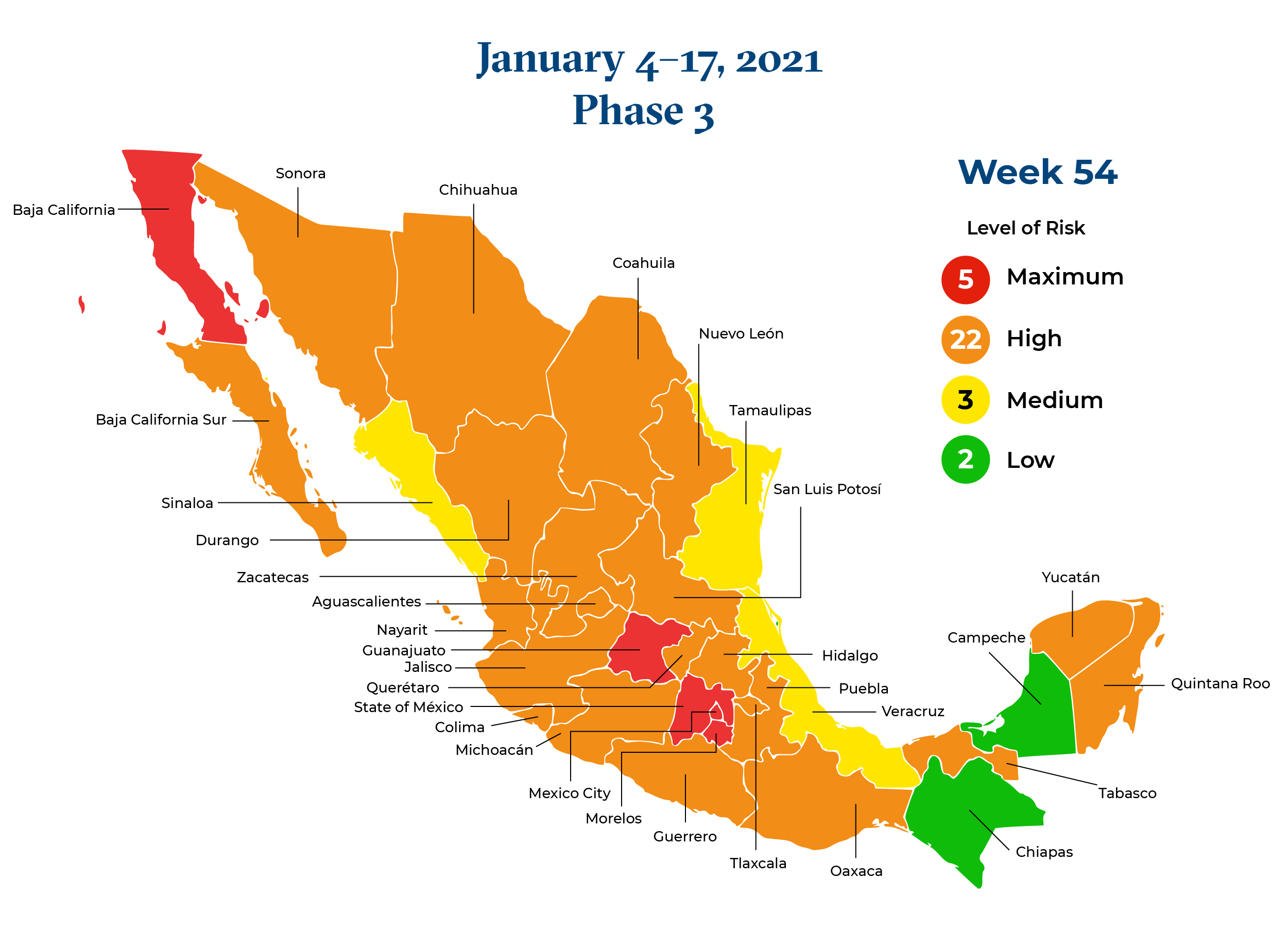Cases of COVID-19 are continuing to rise in Mexico, with more than 1.45 million positive cases as of January 4, 2021, according to the Ministry of Health, and hospital occupancy rates still climbing. The worsening spread of COVID-19 has prompted the federal government to impose greater restrictions on activities in more states throughout the country according to the nation’s four-tiered “traffic light” pandemic monitoring system.
The monitoring system, which is updated every other week, was implemented in June 2020, and is used to alert residents to the epidemiological risks of COVID-19 and provide guidance on restrictions on certain activities in each of the country’s states. Below is a map for the period of January 4, 2021, through January 17, 2021, indicating the COVID-19 risk level in each of the states and the capital.
Baja California, Guanajuato, Mexico City, the State of Mexico, and Morelos are all currently designated in red status, the highest number of states at this level since August 17–30, 2020. In descending levels of restrictions from the red traffic light, 22 states are in orange status, 3 are in yellow status, and 2 are in green status.
Among the states in orange status, Aguascalientes, Chihuahua, Puebla, Queretaro, Quintana Roo, Tamaulipas, and Veracruz have implemented local traffic light mechanisms with respect to municipalities or areas of their states with maximum alert levels of contagion but without decreeing a return to red status. The maximum alert levels apply in areas that have especially high numbers of COVID-19 cases and high hospital occupancy rates of patients with COVID-19.
This chart presents the traffic light status of each state, and, as applicable, variations between federal and local traffic light statuses based on publications of the federal Ministry of Health and status reports provided by each state.




 />i
/>i


